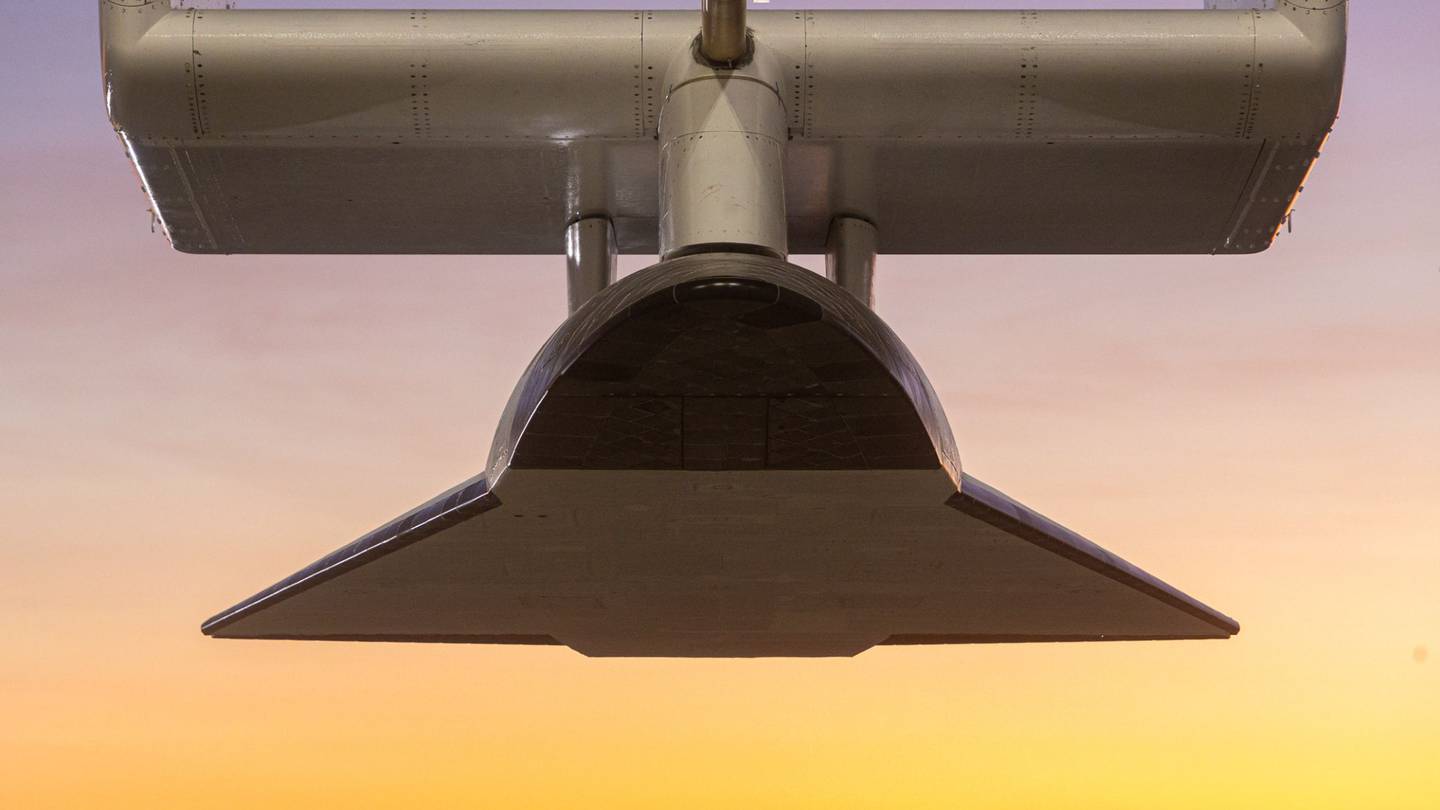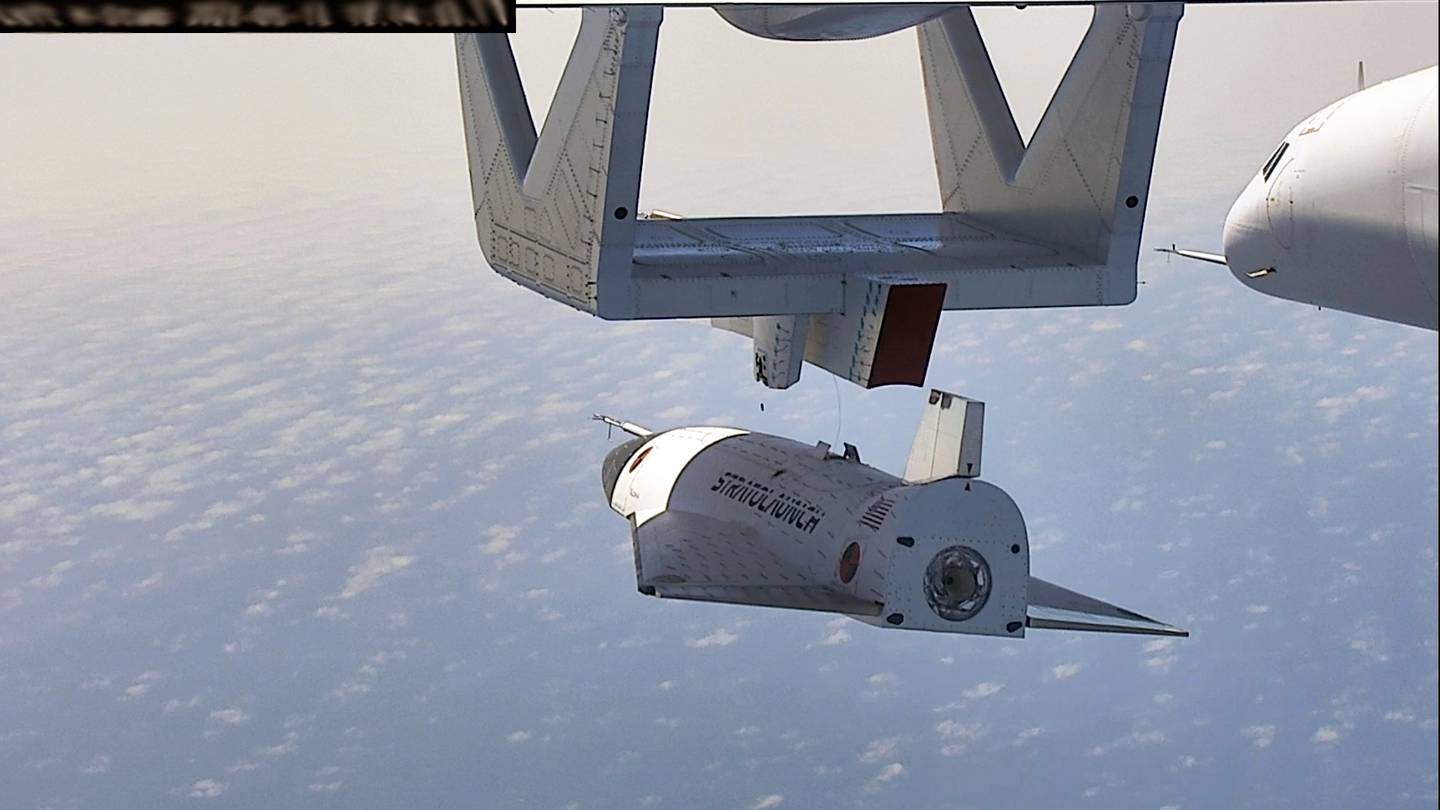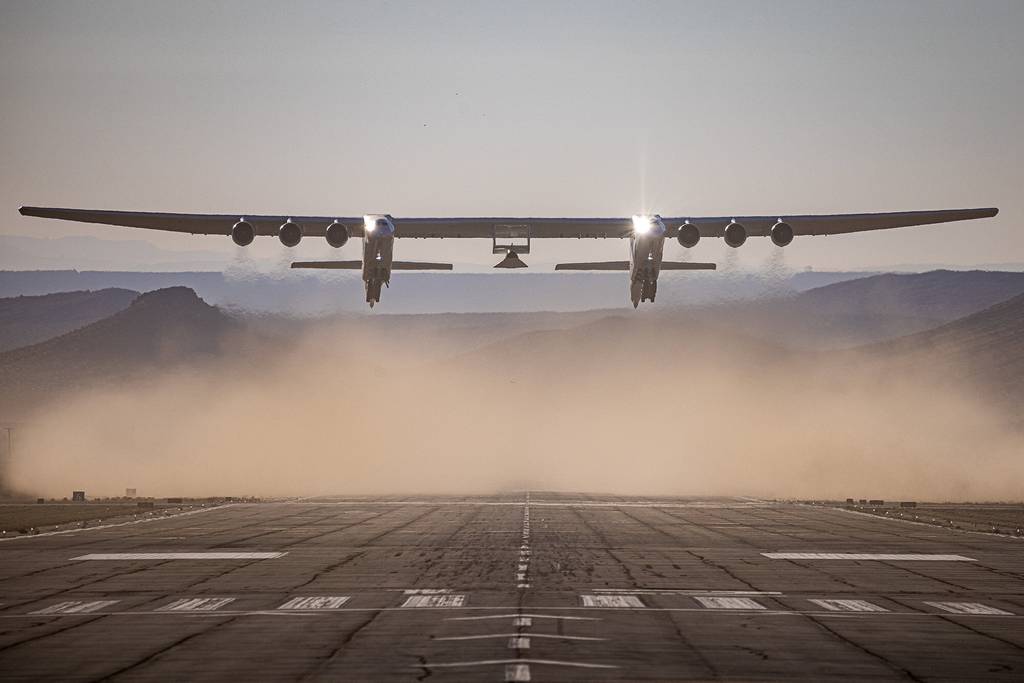Editor’s note: This story was updated to correct information about Roc’s fuselage design.
MOJAVE, Calif. — In Middle Eastern mythology, the Roc is a large bird, strong enough to carry an elephant in its talons.
Stratolaunch’s massive Roc aircraft, named after the griffin-like creature, can carry as much as 500,000 pounds of payload, the equivalent of more than 33 large elephants. With a wingspan that stretches 385 feet, it’s the widest airplane in operation — and it takes up an entire hangar at the company’s manufacturing and test facilities at the Mojave Air and Space Port in California.
“You actually have to get the aircraft out of the hangar to see the whole airplane,” Stratolaunch’s Senior Vice President for Engineering Aaron Cassebeer told C4ISRNET in an interview during a recent visit to the site.
Stratolaunch’s early vision for Roc was as a space launch platform. The aircraft, comprised of two fuselages, would fly small rockets to high altitudes where they would then lift off into orbit. In 2019, the company changed course, refocusing its sights on a new mission: hypersonic flight testing.
The company is now preparing Roc to carry its Talon-A hypersonic test aircraft for its first hypersonic, or Mach 5, flight — potentially before the end of the year.

While Talon-A will descend into the ocean following that first flight, the company is eyeing a second mission in early 2024 during which the system will reach hypersonic speeds and land on a runway.
The implications of a successful Talon-A test campaign are significant for the Defense Department’s hypersonic efforts, which are focused on developing and fielding high-speed weapons and defending against similar systems that China and Russia are building.
To get there, DoD is working to increase its testing rigor, setting a goal in 2022 to eventually conduct one flight each week. Today, most major hypersonic programs fly just a few trials each year.
A system like Talon-A could provide the department with a reusable, more affordable platform to test and validate high-speed components, subsystems and other technologies, according to Stratolaunch CEO Zachary Krevor.
“How do you really demonstrate that your critical technologies, your instrumentation, your materials are actually working in the flight environment? You have to go fly,” he told C4ISRNET in a Dec. 2 interview. “The significance of us and our first flight is really demonstrating [that] now there’s an affordable hypersonic capability coming online that’s going to generate a tremendous amount of new flight data that could be used all across the DoD community.”
Return on investment
The company hasn’t disclosed the cost of a single Talon-A flight, but Krevor said it’s “an order of magnitude less” than the average DoD hypersonic flight test, which sits around $100 million, according to the Congressional Research Service.
As Stratolaunch works toward achieving a once-a-month flight test cadence, he expects the department to very quickly see the impact of that reduced cost.
“We should be providing that [return on investment] back to the DOD by the end of next year or early 2025,” he said.
In the lead up to its first hypersonic mission, Stratolaunch’s engineers and flight crews have been preparing Roc and Talon-A through a series of ground and flight tests.
In May, an early Talon-A vehicle, dubbed TA-0, conducted what’s called a drop test where it was released from Roc and glided to a specific “aim point.” In late November, the company conducted a taxi test during which Talon-A was mated to Roc’s large pylon.
On Dec. 3, the pair of aircraft completed the first captive carry flight, during which Talon-A was fueled with the same propellants it will use for its first hypersonic flight. The high-speed aircraft did not separate from Roc, but flew for more than three hours, providing data about Talon-A’s propulsion system and ensuring the telemetry systems on both aircraft were operating as expected.

The company told C4ISRNET in a Dec. 7 statement that while they are still reviewing data from the flight, the aircraft appears to have performed as expected. While Stratolaunch is aiming for its initial hypersonic flight this year, spokeswoman Kate Squires said post-flight reviews and next steps could push that plan to next year.
“With the end of the year fast approaching, we’ll take the time required to provide our customers maximum value via our rigorous and methodical test process,” Squires said. “Ensuring a rigorous set of next steps may result in a pivot of our powered flight to 2024.”
Talon-A production
As the company continues its data review and test preparations, it is working in parallel to move additional Talon-A vehicles through its production line. Next door to Roc’s hangar sits the hypersonic aircraft’s manufacturing facility where three more Talon-A aircraft sit in various stages of the assembly process.
The next Talon-A in line, or TA-2, has most of its components installed. It recently started its functional testing phase, according to Cassebeer, which involves installing its power systems and making sure all of its subsystems are working as designed.
The company has demonstrated the ability to manufacture three or four systems at one time, but Cassebeer said it’s not clear how much its manufacturing cadence will increase once it is flying the Talon-A more regularly. That will depend, in part, on demand, but also on how well the reusable system is performing.
“The vehicles are reusable,” he said. “Once you have a barn full of vehicles, [production] may not actually be your limiting factor. . . . We don’t want to build so many vehicles that now they’re just sitting there collecting dust.”

Given the Defense Department’s need for more flight test services, demand for a reusable Talon-A is already high. The company has a nearly full manifest for 2024 and is already on contract to support five test flights for the Navy Surface Warfare Center’s Multiservice Advanced Capability Test Bed program or MACH-TB.
Its first flight will also be integrated with the Test Resource Management Center’s Skyrange, which uses uncrewed systems to track hypersonic vehicles in flight.
Stratolaunch recently completed the purchase of a second carrier aircraft to help accommodate Talon-A demand — a Boeing 747 owned by Virgin Orbit before the company declared bankruptcy in the spring.
“As we gain those flight contracts, as we fly and we show that we’re successful, we expect that demand signal to continue to increase,” Cassebeer said.
Courtney Albon is C4ISRNET’s space and emerging technology reporter. She has covered the U.S. military since 2012, with a focus on the Air Force and Space Force. She has reported on some of the Defense Department’s most significant acquisition, budget and policy challenges.








